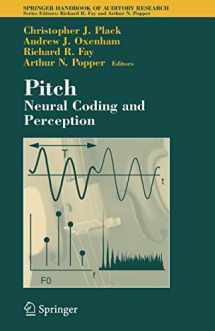
Pitch: Neural Coding and Perception (Springer Handbook of Auditory Research, 24)
Book details
Summary
Description
Although pitch has been considered an important area of auditory research since the birth of modern acoustics in the 19th century, some of the most significant developments in our understanding of this phenomenon have occurred comparatively recently. In auditory physiology, researchers are now identifying cells in the brainstem and cortex that may be involved in the derivation of pitch. In auditory psychophysics, dramatic developments over the last few years have changed our understanding of temporal pitch mechanisms, and of the roles of resolved and unresolved harmonics. Computational modeling has provided new insights into the biological algorithms that may underlie pitch perception. Modern brain imaging techniques have suggested possible cortical locations for pitch mechanisms.
This timely volume brings together the more recent findings, while emphasizing their relation to the discoveries of the past. It brings together insights from several different methodological areas: physiology, psychophysics, comparative, imaging, etc., in addressing a single scientific problem. Pitch perception can be regarded as one of the main problems of hearing, and the multidisciplinary approach of the book provides a valuable reference source for graduate students and academics.


We would LOVE it if you could help us and other readers by reviewing the book
Book review



